Kara Grady is a wildflower enthusiast living in eastern Iowa. Her work has been published in the Erythronium newsletter of the Iowa Native Plant Society. When she’s not going on rare flower adventures, she can be found reading the latest botanical books or attending prairie seminars. The University of Iowa’s Facilities Management website has more information about Macbride Nature Recreation Area in Johnson County.
“And this is called the Mother Oak.”
Land manager Tamra Elliott and I stood together beneath the white oak’s branches, which were so heavy with leaves that they drooped towards the ground. “People kept telling me that it was dead or dying. But I knew it was alive. Our team worked to open up the canopy around it and it came back to life.”
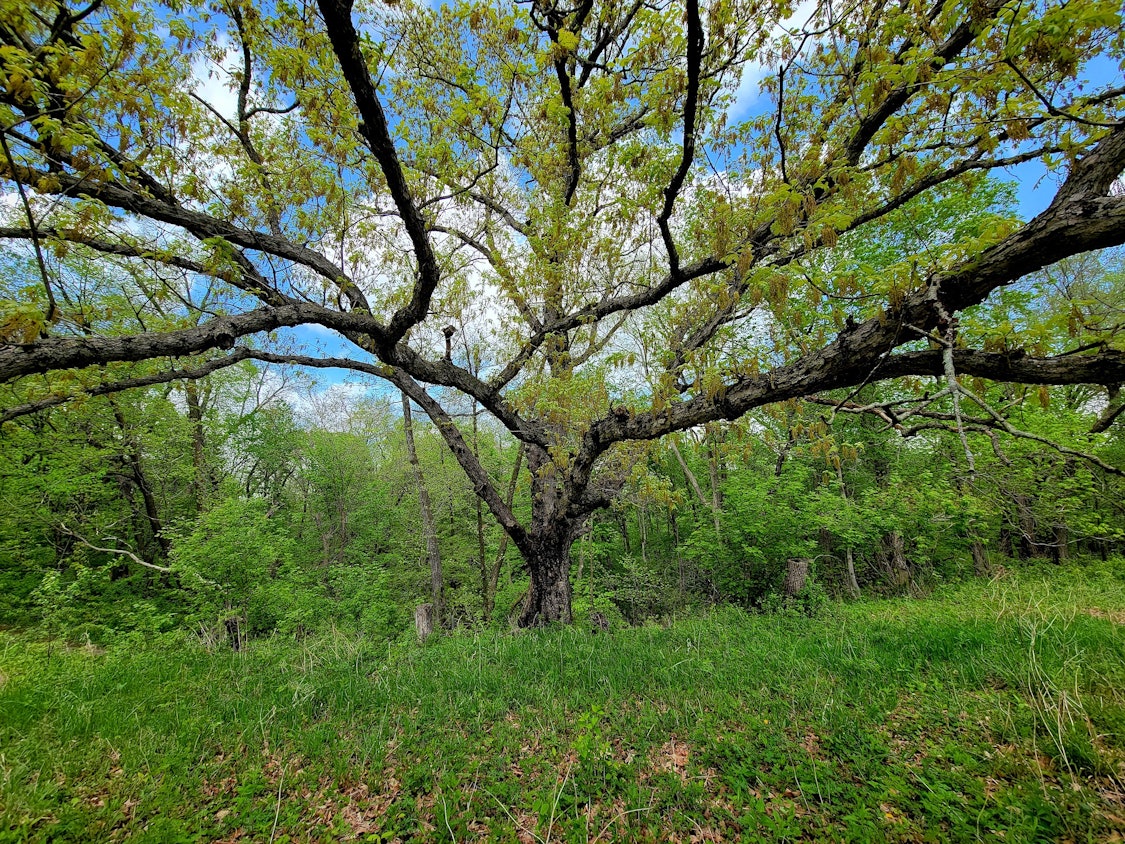
The Mother Oak (Quercus alba), photo by Tamra Elliott
It’s one strategy Tamra and her coworkers of the University of Iowa’s Macbride Nature Recreation Area team are doing to restore the open woodland. Marking trees around each oak, the competition is whittled away by 25 percent each year to ease the oaks back into their spreading nature. But the trees are only one of the marvels I’ve seen as a new volunteer for the vegetation survey that Tamra and botanist Aaron Basten are conducting in the MacBride Nature Recreation Area.
“This place is unique for Iowa.” Tamra told me. “People kept asking me when I was going to start mowing down trees to turn it into a prairie. But I realized that this was meant to be woodland. And the vegetation here is different too. We have shooting stars growing on hillsides were they normally don’t grow. Seven of the state orchids live here. It really is a treasure.”
We continued past the Mother Oak and came to a pollinator patch by one of the maintenance buildings, made by the local boy scouts. My mouth dropped open as Tamra pointed out the purple milkweed within. It was just starting to bloom, but the dark rosy petals were there. I itched for a camera.

Purple milkweed (Asclepias purpurascens), photo by Tamra Elliott
Tamra then drove us to the Eagle Lakeshore Trail, where we began to hike in earnest. I scrambled up and down the sandy path in her wake, focused more on footwork then on plants. So I nearly stumbled into her when she stopped and pumped a fist.
“These haven’t been seen growing here before!” Tamra said excitedly, pointing to the slightly familiar blue flowers scattered amongst the understory. “Do you recognize them?”
It took me a long moment before I responded, but it eventually came to me. “It’s a kind of skullcap.” Heartleaf Skullcap, I’m later told. But why was it growing now and not before? Something must have changed in the understory to make it happen, was our consensus.
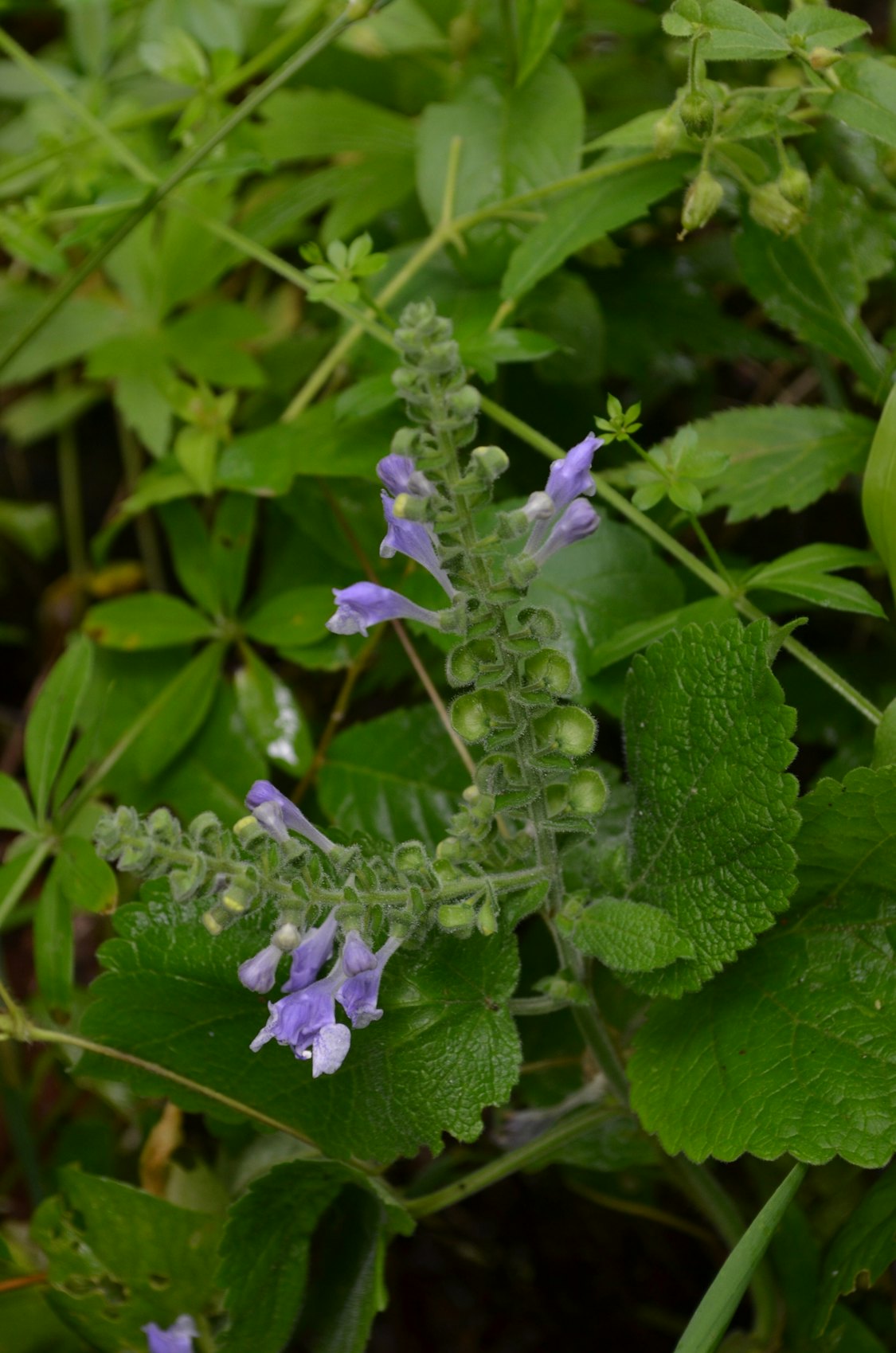
Heartleaf skullcap (Scutellaria ovata), photo by Aaron Basten
Farther along the trail Tamra stopped and her excited and passionate demeanor dropped to quiet reverence. “This,” she said, touching a nearby bush, “is leatherwood. This is the only place it grows besides one other in Johnson County. We’re hoping our efforts will bring back more.” I patted the bush, which felt springy to the touch.

Eastern Leatherwood (Dirca palustris)
My floral adventures of the woods continued several months later when Tamra, Aaron, and I went to pick seed along the southern lakeshore. I was stunned when we emerged from the woods to find a meadow of partridge pea stretching from the trees all the way down to the water.

Partridge pea (Chamaecrista fasciculata) meadow
Lakeshores in my experience tended to be full of grasses with forbs sprinkled amongst them. Not to mention the red, oxidized sandy soil beneath my feet hardly seemed conducive to wildflowers. But the lakeshore was filled with not only the partridge pea, but also blue vervain, black-eyed Susan, and tiny frogfruit. We made our ankle-bending way around the lake, finding few seeds but plenty of laughs as Tamra slipped and almost ended up in the water.

Blue vervain (Verbena hastata)

Frog fruit (Phyla nodiflora)
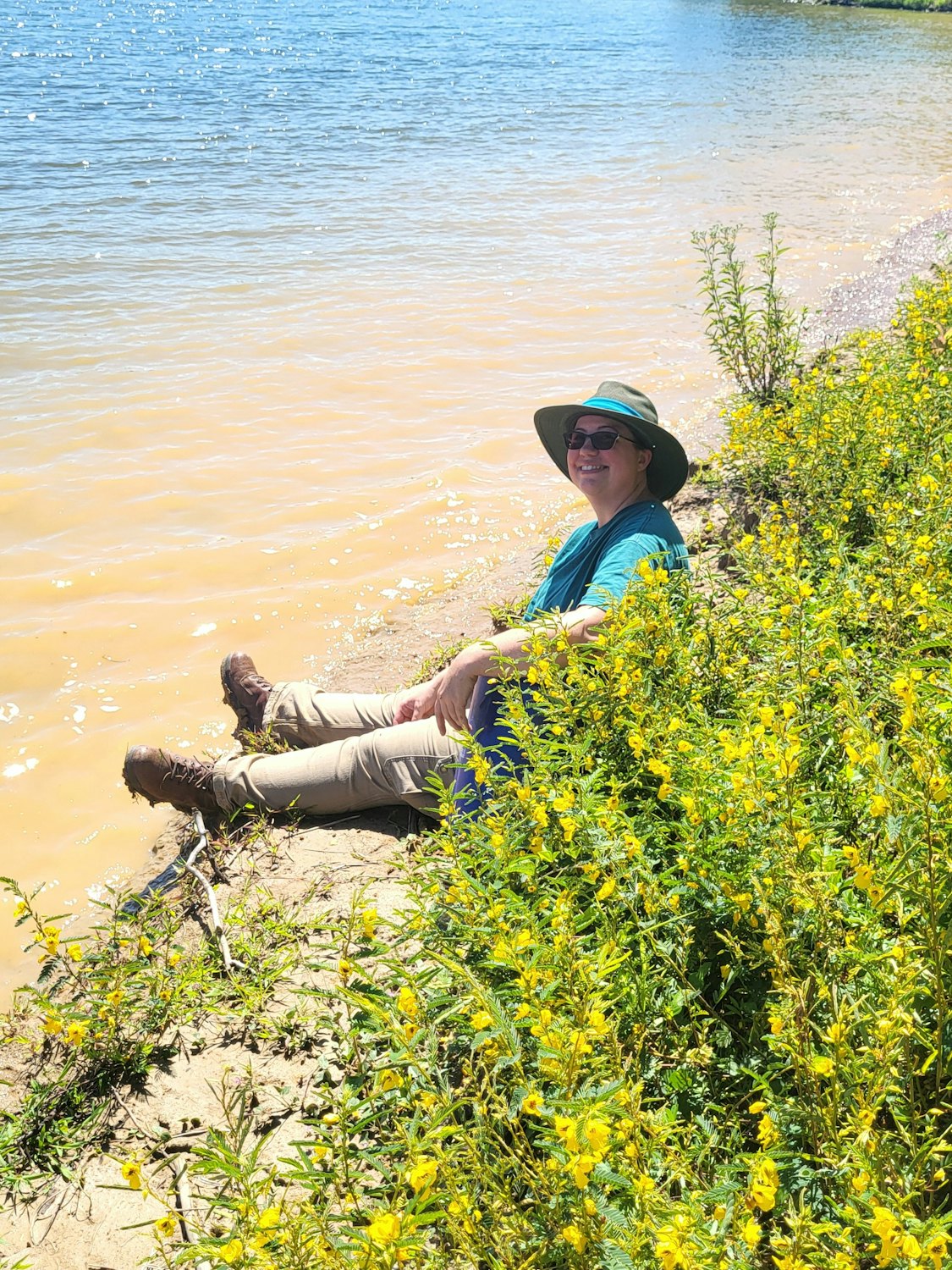
Tamra Elliot, Land Manager of Macbride Nature Recreation Area
The hot day soon had us retreating back into the woods, where the partridge pea gave way to a different meadow of tall boneset. Monarchs and other butterflies flitted around, and I managed to sneak close to a black swallowtail.

Black Swallowtail (Papilio polyxenes) on Tall Thoroughwort or Tall Boneset (Eupatorium altissimum)
Deciding the best way back to Aaron’s car was through a nearby thicket, we dove through and emerged to find a monkey flower bush in full bloom. It wasn’t the rare winged species, which made Aaron sigh, but that didn’t keep me from clicking away to photograph my new discovery.

Monkey flower (Mimulus ringens)
And a refreshing treat awaited us in the form of a wild apple tree when we finally reached the road. The cool, sticky crunch of apples shared among friends was the perfect way to end our day’s rambles.
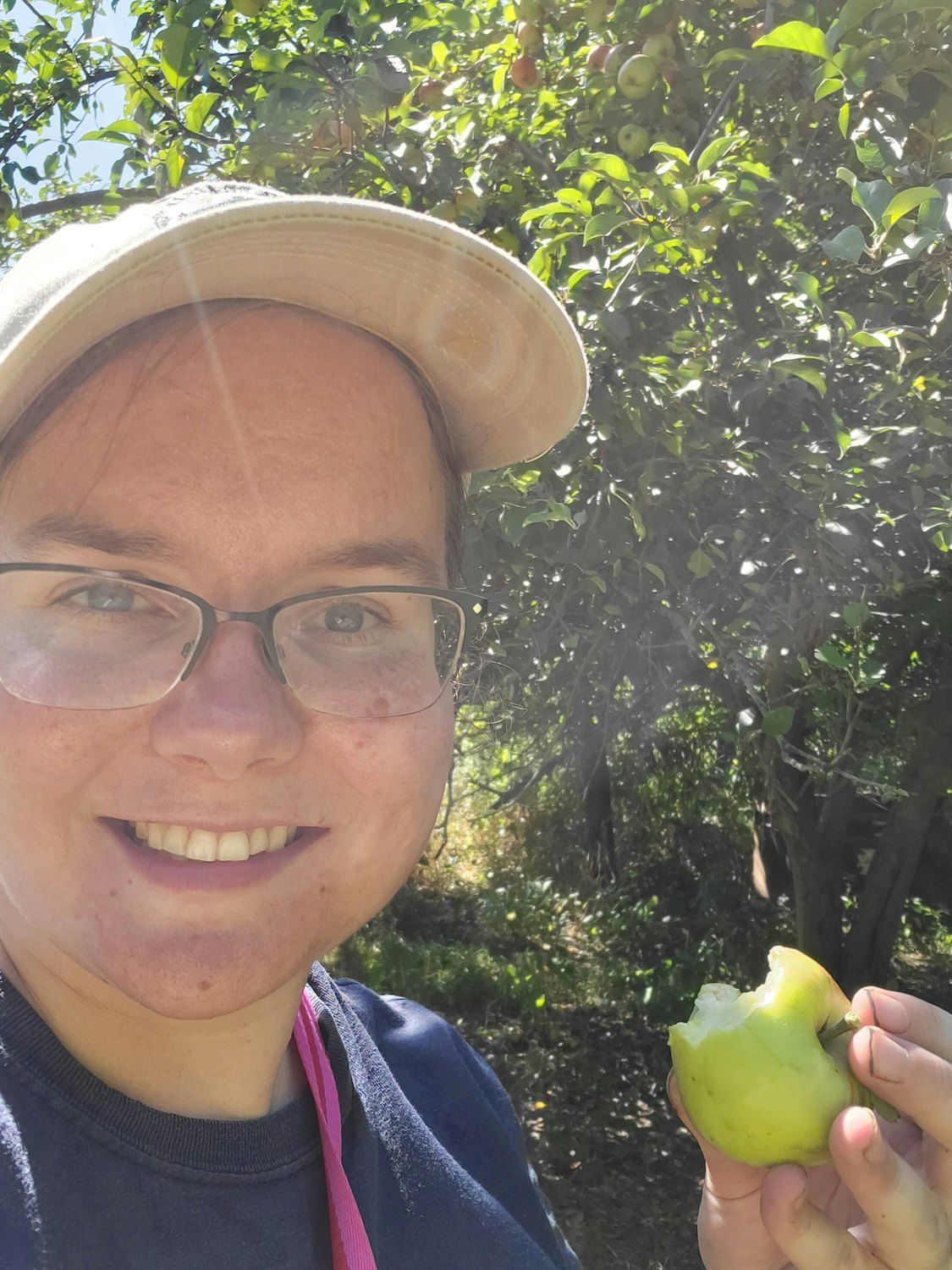
Here’s to more exploration and discovery at Lake Macbride!
All photos by Tamra Elliott and Aaron Basten are published with permission.

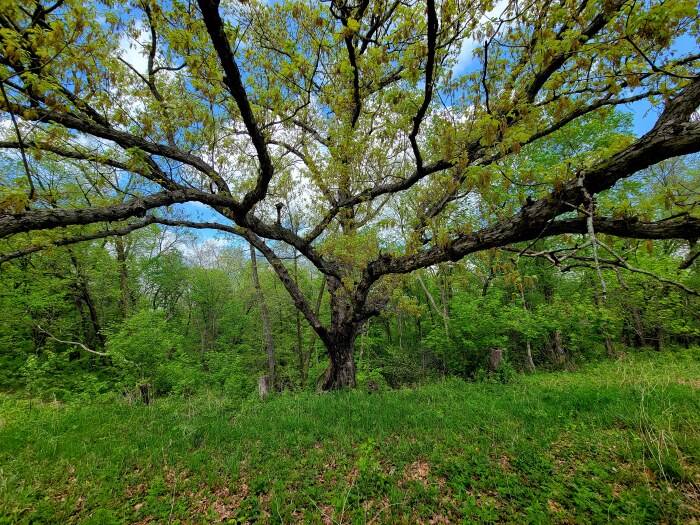
1 Comment
One reason for the shoreline flora of Lake MacBride...
…might be that it’s an artificial lake rather than a natural lake(?) But that’s just a guess.
I really appreciate the photo of Purple Milkweed, a beautiful classic oak savanna wildflower. Heartleaf Skullcap and Frog Fruit also grow in oak savannas. I wish many more Iowans knew how beautiful oak savannas are when they are restored.
But one disadvantage is that after learning about oak savannas, it can be painful to see Iowa oak woodlands that badly need and are not getting the kind of rescue work being done at Lake MacBride. I hope there will be much, much more oak-ecosystem rescue work in Iowa’s future. Thank you, Macbride Nature Recreation Area team.
PrairieFan Fri 15 Sep 10:49 PM